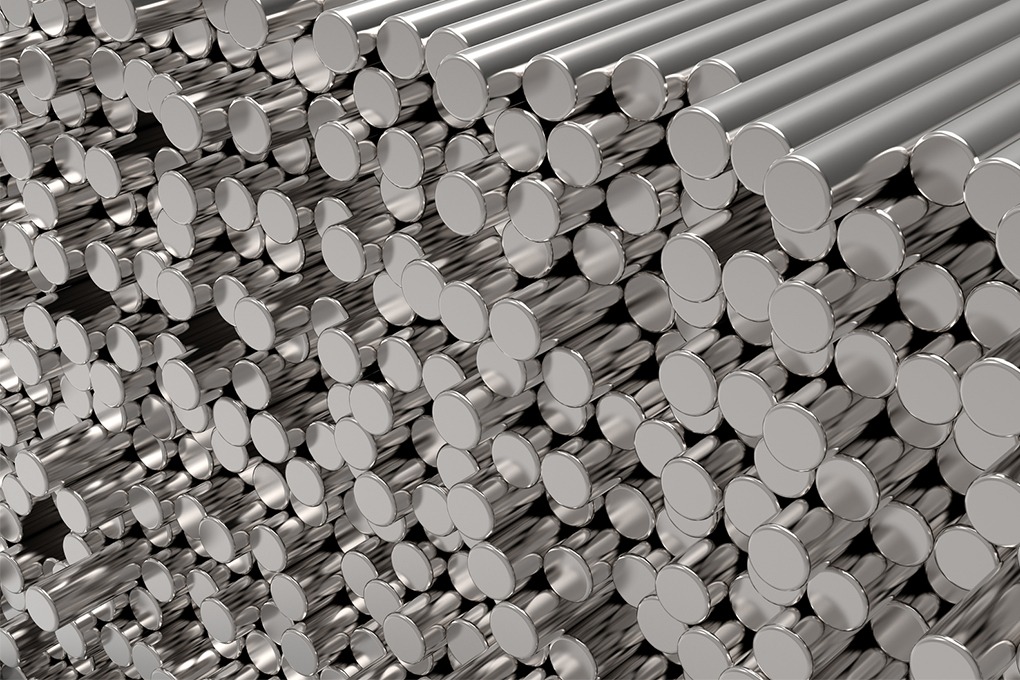Steel is one of the most ubiquitous materials in the world, used in everything from building and construction to transportation to appliances. However, there are many different types of steel out there that have different properties, and therefore different uses.
Stainless steel is an extremely common type of steel, useful, of course, due to its ability to resist corrosion. Steel is essentially made by adding carbon to iron, and iron inevitably will rust. However, stainless steel is resistant to corrosion.

Not all steels are the same, and one of the most interesting types is stainless steel. Let’s take a look at the difference between mild steel and stainless steel.
What Is Stainless Steel?
Stainless steel is a family of corrosion-resistant alloy steels that contain 10.5% or more chromium (hence their shiny appearance). The resistance to corrosion is due to the naturally occurring chromium-rich oxide film that forms on the surface of the steel when it is manufactured. Although extremely thin (and invisible), this film protects the steel from a range of corrosive materials.
Who Invented Stainless Steel?
In 1872, two Englishmen named Clark and Woods patented an alloy is very close to the modern equivalent of stainless steel – a combination of chromium (30-35%) and tungsten (2%).
For the next 40 years, more developments were made around the world, each noting the relationship between chromium and steel and the rust-proof result of a marriage between the two. However, these efforts were tedious and despite many patents being registered, no alloys were mass-produced or marketed to the general public.
Then Harry Brearly came along. Brearly worked out of the Brown-Firth research factory in the industrial town of Sheffield, England where he spent countless hours seeking a strong alloy suitable for gun barrels, which were then known to wear down easily.
His efforts lasted months, and while the pile of scrap metal next to his workbench rusted, he noticed something strange – a barrel gleaming amongst them.
He pulled the shining barrel from the rusted heap and studied it. This particular sample contained roughly 12.8% chromium and 0.24% carbon. At that time, to properly inspect the microstructure of alloys they had to be polished and etched. This could be achieved by exposing it to a dilute solution of nitric acid in alcohol. However, this sample, he saw, was very resistant to chemical attack.
Within three weeks he perfected a hardening process for the alloy. He named the invention “rustless steel”. Read more about the history of stainless steel here.
What Is The Difference Between Mild Steel and Stainless Steel?
There are a few key differences between steel and stainless steel:
• Corrosion resistance – Of course, the most immediate is their ability to resist corrosion. The chromium in stainless steel makes it more corrosion resistant than carbon steels (such as mild steel).
• Mechanical properties – There are many different sub-types of steel and stainless steel, so it’s hard to summarise the different mechanical properties between the two. In terms of carbon content, there are many different types of steel: high carbon, medium carbon and low carbon. There are many different types of stainless steel too such as Austenitic stainless steel, Ferritic stainless steel, Martensitic stainless steel and Duplex stainless steel. These all have quite different mechanincal properties.
• Cost – Stainless steel is generally more expensive than carbon steels, however, this will depend on the grade. The higher price is stainless steel is usually due to the alloying elements it contains, such as chromium, nickel, and manganese.
• Looks – One of the most obvious differences between stainless steel and mild steel is the look: stainless steel is shiny and reflective, and while mild steel can be polished to have a bright, shiny look, it is usually much less dull in appearance.
If you are considering steel for any construction purposes and would like a professional opinion, we can help.
Our team expert structural steel fabricators have the experience and knowledge to answer any of your questions and will ensure that you find the best solution to suit your needs. To contact us today, simply call, fax, email for a steel quote or drop by our Brookvale location.